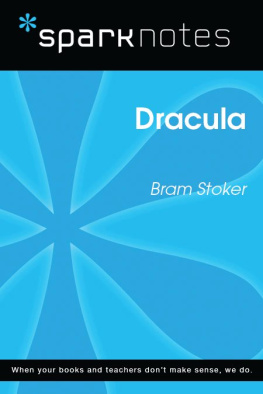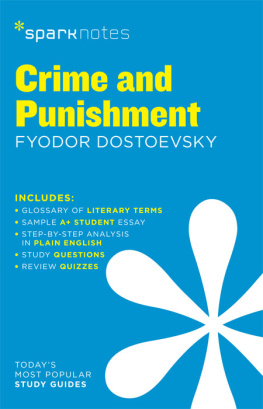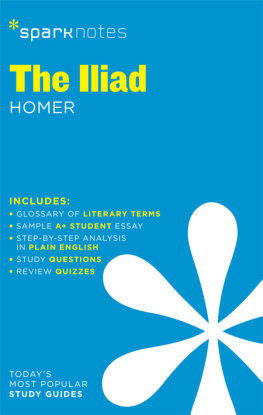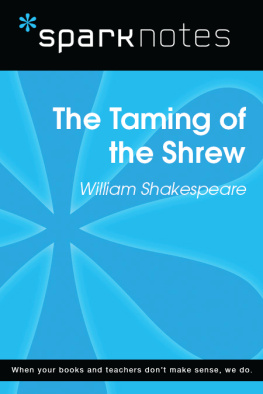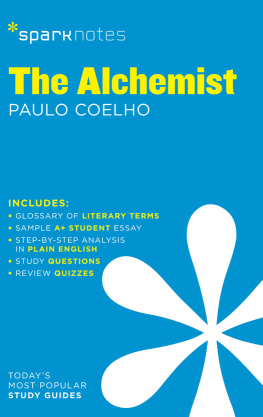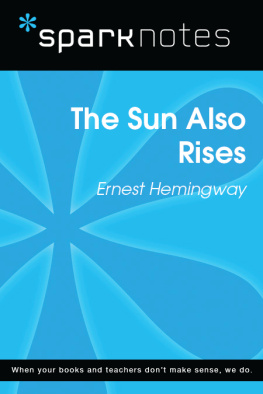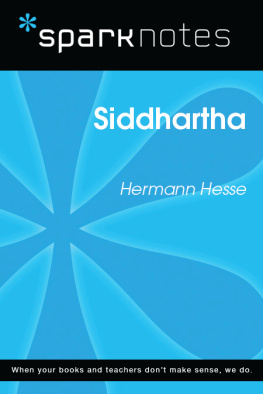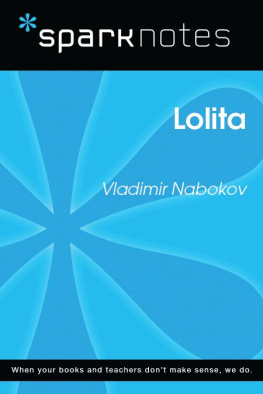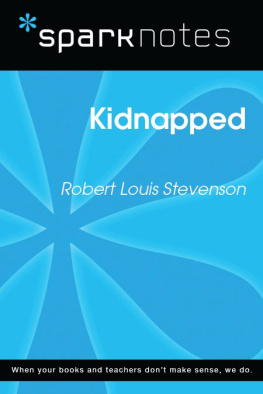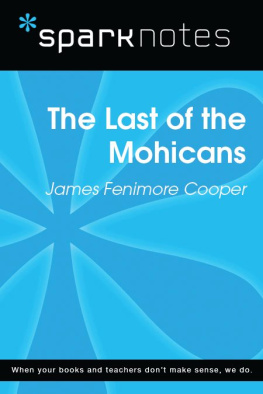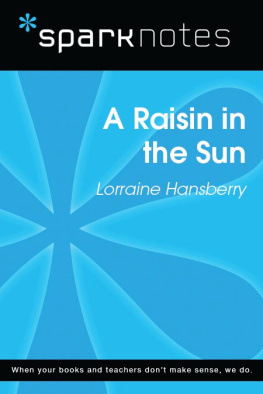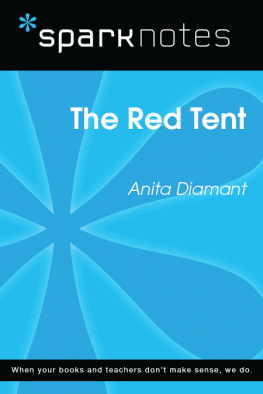SparkNotes - Dracula
Here you can read online SparkNotes - Dracula full text of the book (entire story) in english for free. Download pdf and epub, get meaning, cover and reviews about this ebook. year: 2014, publisher: Spark, genre: Romance novel. Description of the work, (preface) as well as reviews are available. Best literature library LitArk.com created for fans of good reading and offers a wide selection of genres:
Romance novel
Science fiction
Adventure
Detective
Science
History
Home and family
Prose
Art
Politics
Computer
Non-fiction
Religion
Business
Children
Humor
Choose a favorite category and find really read worthwhile books. Enjoy immersion in the world of imagination, feel the emotions of the characters or learn something new for yourself, make an fascinating discovery.
- Book:Dracula
- Author:
- Publisher:Spark
- Genre:
- Year:2014
- Rating:5 / 5
- Favourites:Add to favourites
- Your mark:
- 100
- 1
- 2
- 3
- 4
- 5
Dracula: summary, description and annotation
We offer to read an annotation, description, summary or preface (depends on what the author of the book "Dracula" wrote himself). If you haven't found the necessary information about the book — write in the comments, we will try to find it.
Making the reading experience fun!
Created by Harvard students for students everywhere, SparkNotes is a new breed of study guide: smarter, better, faster.
Geared to what todays students need to know, SparkNotes provides:
chapter-by-chapter analysis
explanations of key themes, motifs, and symbols
a review quiz and essay topics
Lively and accessible, these guides are perfect for late-night studying and writing papers.
Dracula — read online for free the complete book (whole text) full work
Below is the text of the book, divided by pages. System saving the place of the last page read, allows you to conveniently read the book "Dracula" online for free, without having to search again every time where you left off. Put a bookmark, and you can go to the page where you finished reading at any time.
Font size:
Interval:
Bookmark:

2003, 2007 by Spark Publishing
This Spark Publishing edition 2014 by SparkNotes LLC, an Affiliate of Barnes & Noble
All rights reserved. No part of this publication may be reproduced, stored in a retrieval system, or transmitted in any form or by any means (including electronic, mechanical, photocopying, recording, or otherwise) without prior written permission from the publisher.
Sparknotes is a registered trademark of SparkNotes LLC
Spark Publishing
A Division of Barnes & Noble
120 Fifth Avenue
New York, NY 10011
www.sparknotes.com /
ISBN-13: 978-1-4114-7490-1
Please submit changes or report errors to www.sparknotes.com/.
10 9 8 7 6 5 4 3 2 1
B ram Stoker was born in Dublin, Ireland, in 1847 . The son of a civil servant, Stoker was a sickly child. Stokers mother, a charity worker and writer, spent a good deal of time entertaining her son with fantastic tales. Stoker went on to study math at Trinity College and graduated in 1867 , at which time he joined the Irish civil service. He also worked as a freelance journalist and drama critic, which enabled him to meet the legendary stage actor Henry Irving. The two men became lifelong friends, and Stoker managed Irvings theater from 1878 until Irvings death in 1905 . Stoker married an aspiring actress, Florence Balcombe, and the couple had one son, Noel, who was born in 1879 . Stoker moved to London in order to oversee Irvings theater, and he fell into the citys literary circles, which included figures such as Oscar Wilde, Arthur Conan Doyle, and Alfred Lord Tennyson.
Stokers early fiction is not of particularly high quality. He wrote short stories for children and then a first novel, The Snakes Pass ( 1890 ), which was unsuccessful. Stokers fortunes changed in 1897 with the publication of Dracula, which still stands as his greatest -literary achievement. Although the novel was not an immediate popular success, it has been in print continuously since its first publication and has inspired countless films and other literary works. Stoker continued to write until his death in 1912 , producing several adventure novels, including The Jewel of Seven Stars ( 1904 ) and The Lair of the White Worm ( 1911 ).
Vampire legends have been a part of popular folklore in many parts of the world since ancient times. Throughout the Middle Ages and even into the modern era, reports of corpses rising from the dead with supernatural powers achieved widespread credence. The Dracula family, which Stokers count describes with pride in the early chapters of the novel, is based on a real fifteenth-century family. Its most famous member, Vlad Draculaor Vlad the Impaler, as he was commonly knownenjoyed a bloody career that rivaled that of his fictional counterpart. The Prince of Wallachia, Vlad was a brilliant and notoriously savage general who impaled his enemies on long spikes. The prince also had a reputation for murdering beggars, forcing women to eat their babies, and nailing the turbans of disrespectful ambassadors to their heads. While Stokers Count Dracula is supposed to be a descendant of Vlad, and not the prince himself, Stoker clearly makes the count resemble his fearsome ancestor. This historical allusion gives Dracula a semblance of truth, and, as the Authors Note and the coda make clear, Stoker wants to suggest that the documents assembled in the novel are real.
Stoker also relies heavily on the conventions of Gothic fiction, a genre that was extremely popular in the early nineteenth century. Gothic fiction traditionally includes elements such as gloomy castles, sublime landscapes, and innocent maidens threatened by ineffable evil. Stoker modernizes this tradition in his novel, however, moving from the conventional setting of Draculas ruined castle into the bustle of modern England. As Stoker portrays the collision of two disparate worldsthe counts ancient Transylvania and the protagonists modern Londonhe lays bare many of the anxieties that characterized his age: the repercussions of scientific advancement, the consequences of abandoning traditional beliefs, and the dangers of female sexuality. To this day, Dracula remains a fascinating study of popular attitudes toward sex, religion, and science at the end of the nineteenth century.
J onathan Harker, a young English lawyer, travels to Castle Dracula in the Eastern European country of Transylvania to conclude a real estate transaction with a nobleman named Count Dracula. As Harker wends his way through the picturesque countryside, the local peasants warn him about his destination, giving him crucifixes and other charms against evil and uttering strange words that Harker later translates into vampire.
Frightened but no less determined, Harker meets the counts carriage as planned. The journey to the castle is harrowing, and the carriage is nearly attacked by angry wolves along the way. Upon arriving at the crumbling old castle, Harker finds that the elderly Dracula is a well educated and hospitable gentleman. After only a few days, however, Harker realizes that he is effectively a prisoner in the castle.
The more Harker investigates the nature of his confinement, the more uneasy he becomes. He realizes that the count possesses supernatural powers and diabolical ambitions. One evening, Harker is nearly attacked by three beautiful and seductive female vampires, but the count staves them off, telling the vampires that Harker belongs to him. Fearing for his life, Harker attempts to escape from the castle by climbing down the walls.
Meanwhile, in England, Harkers fiance, Mina Murray, corresponds with her friend Lucy Westenra. Lucy has received marriage proposals from three menDr. John Seward, Arthur Holmwood, and an American named Quincey Morris. Though saddened by the fact that she must reject two of these suitors, Lucy accepts Holmwoods proposal.
Mina visits Lucy at the seaside town of Whitby. A Russian ship is wrecked on the shore near the town with all its crew missing and its captain dead. The only sign of life aboard is a large dog that bounds ashore and disappears into the countryside; the only cargo is a set of fifty boxes of earth shipped from Castle Dracula. Not long after, Lucy suddenly begins sleepwalking. One night, Mina finds Lucy in the town cemetery and believes she sees a dark form with glowing red eyes bending over Lucy. Lucy becomes pale and ill, and she bears two tiny red marks at her throat, for which -neither Dr. Seward nor Mina can account. Unable to arrive at a satisfactory diagnosis, Dr. Seward sends for his old mentor, Professor Van Helsing.
Suffering from brain fever, Harker reappears in the city of Buda-Pest. Mina goes to join him. Van Helsing arrives in Whitby, and, after his initial examination of Lucy, orders that her chambers be covered with garlica traditional charm against vampires. For a time, this effort seems to stave off Lucys illness. She begins to recover, but her mother, unaware of the garlics power, unwittingly removes the odiferous plants from the room, leaving Lucy vulnerable to further attack.
Seward and Van Helsing spend several days trying to revive Lucy, performing four blood transfusions. Their efforts ultimately come to nothing. One night, the men momentarily let down their guard, and a wolf breaks into the Westenra house. The shock gives Lucys mother a fatal heart attack, and the wolf attacks Lucy, killing her.
After Lucys death, Van Helsing leads Holmwood, Seward, and Quincey Morris to her tomb. Van Helsing convinces the other men that Lucy belongs to the Un-Deadin other words, she has been transformed into a vampire like Dracula. The men remain unconvinced until they see Lucy preying on a defenseless child, which convinces them that she must be destroyed. They agree to follow the ritual of vampire slaying to ensure that Lucys soul will return to eternal rest. While the undead Lucy sleeps, Holmwood plunges a stake through her heart. The men then cut off her head and stuff her mouth with garlic. After this deed is done, they pledge to destroy Dracula himself.
Font size:
Interval:
Bookmark:
Similar books «Dracula»
Look at similar books to Dracula. We have selected literature similar in name and meaning in the hope of providing readers with more options to find new, interesting, not yet read works.
Discussion, reviews of the book Dracula and just readers' own opinions. Leave your comments, write what you think about the work, its meaning or the main characters. Specify what exactly you liked and what you didn't like, and why you think so.

